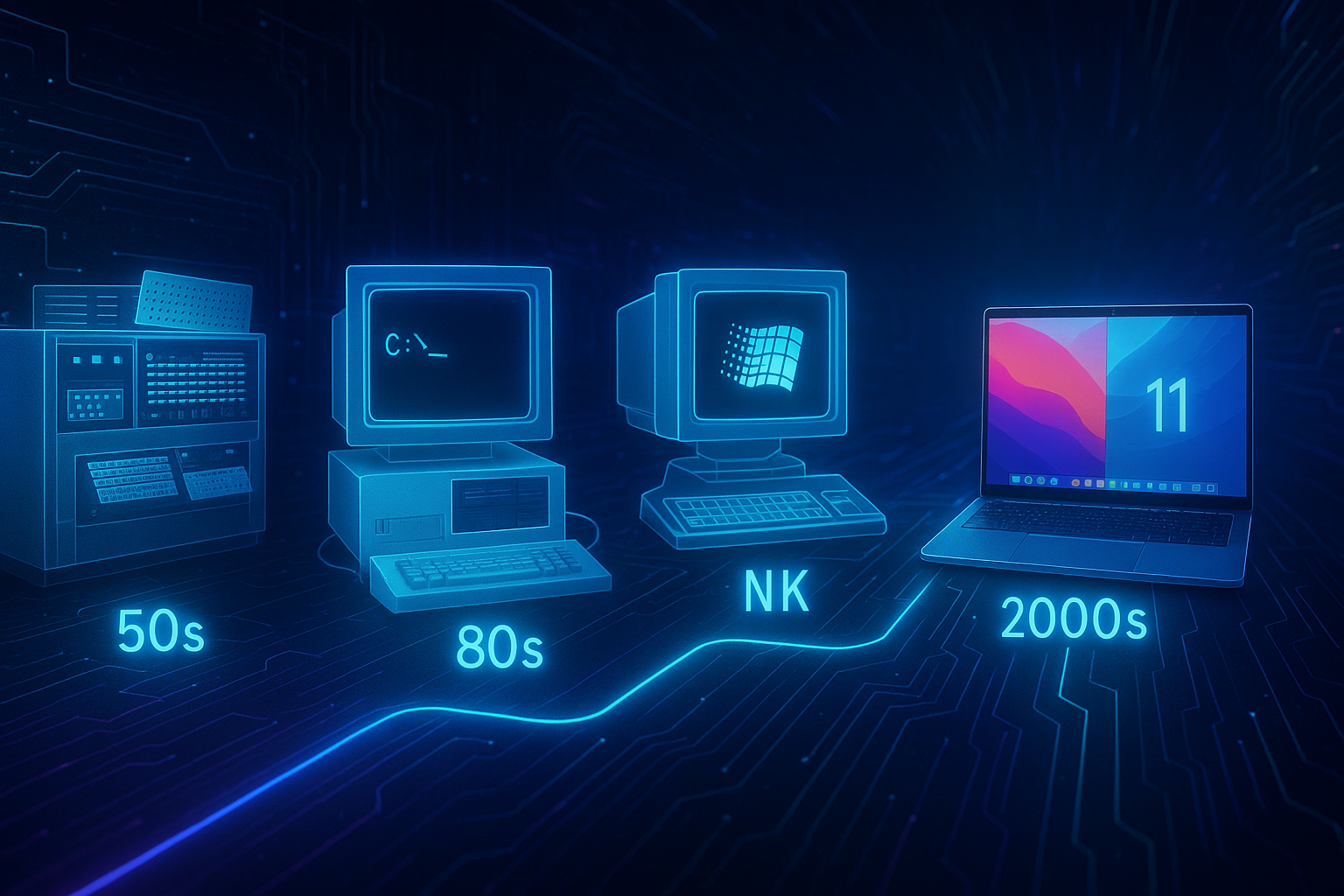A friendly look at the History of Operating systems

Did you think about how we got from manually wiring computers to simply clicking a Start button? We use Operating systems (OS) every single day Windows, macOS, Android, Linux but most of us don’t really know how they came to be. Let’s rewind the clock and take a tour, casual walk through the history of OS from the vey first spark of automation to be polished, cross-platform systems we use today.
It all started with GM-NAA I/O (1956)
Back in the 1940s and early 50s computers were literal giants. And no, not metaphorically they took up entire rooms. Machines like the ENIAC had no screens or keyboards. Programming them meant manually rewiring circuits or feeding punch cards. That all changed with GM-NAA I/O, created in 1956 by General Motors and North American Aviation for the IBM 701 which was IBM’s first commercial scientific computer.
GM-NAA I/O was the first operating system ever. It didn’t have icons, apps or windows. What it did was automate job execution basically telling the machine to run a sequence of tasks without needing a human to press buttons in between.
The 60s-70s: Time-sharing, UNIX & the Birth of multitasking
As computers got more powerful, people started asking “Why can’t multiple users use this thing at the same time?” That idea led to time-sharing systems which laid the foundation for modern multitasking. Enter UNIX in 1969 developed at Bell Labs by Ken Thompson and Dennis Ritchie. It was modular, portable and insanely influential. UNIX introduced
- Command line interaction
- Multi user capabilities
- A hierarchical file system
UNIX didnt just power university computers it became the blueprint or Linux, macOS, Android and more.
The 80s: Personal computers take over
The 80s changed everything. Computers were no longer just for labs and companies they started showing up in homes.
Microsoft’s first big hit was MS-DOS, a text based system for IBM pcs. You had to type commands like c:\>dir just to see our files. It wasn’t glamorous but it worked.
Apple dropped the macintosh bringing the first mainstream graphical user interface (GUI). Suddenly users could click icons instead of typing cryptic commands.
Microsoft quickly followed with Windows 1.0 which let’s be honest wasn’t great. But it was th beginning of something huge.
The 90s: Linux is born, Windows gets a makeover
A college student named Linus Torvalds posted a message online: “I’m doing a free operating system(Just a hobby won’t be big and professional like GNU)” this is the one became a powerhouse especially for servers, developers and anyone who loved open-source freedom.
Then came Windows 95 a game changer with start menu, taskbar and plug-and-play hardware. It felt fast, fun and futuristic. Lots of people were introduced to computing through windows 95.
2000s – 2010s : Internet everywhere & mobile os booms
- Windows XP, macOS X and Ubuntu
In early 2000s OSs got internet-savvy. WIndows XP became known for its stability and clean look. Apple’s macOS X brought UNIX under the hood with modern design. And Ubuntu made Linux approachable for everyone.
Smartphones reshaped the OS game. Apple introduced iOS in 2007 simple, touch friendly and clean. Google followed with Android built on Linux. Soon most of the world was carrying a mini operating system in their pocket.
Today: Seamless, smart and still evolving
Fast forward to now, and operating systems are more powerful than ever.
- Windows 11 is focused on productivity and cloud connectivity.
- macOS Sonoma integrates tightly with other Apple devices.
- Linux continues to dominate in serves and development.
- Chrome OS is lightweight, cloud-first and everywhere in education.
Even though AI powered OS features like Windows Copilot and Apple Intelligence are making headlines we’re still in early days of that journey.
Finally from flipping switches on room sized machines to voice commands on our phones, operating systems have come a long way. They’ve adapted to every leap in tech from mainframes to mobile, desktops to cloud and now into Ai enhanced environments.
Understanding the history of operating systems doesn’t just give you trivia points it helps you appreciate how far tech has come. And maybe just maybe where it’s heading next.
